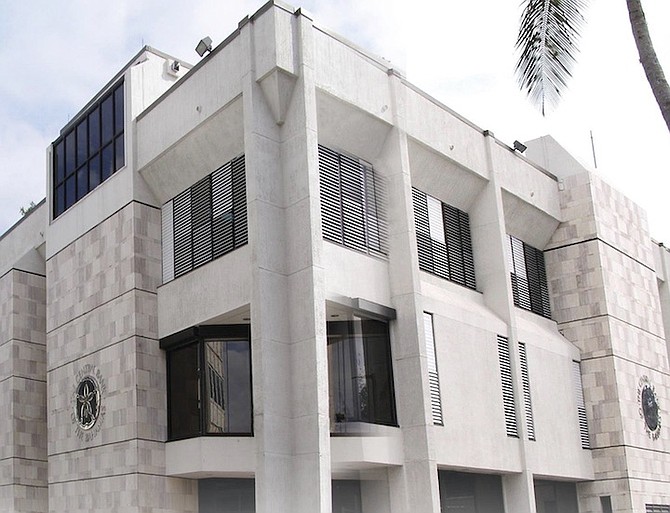By NEIL HARTNELL
Tribune Business Editor
nhartnell@tribunemedia.net
Less than one out of every three mortgage loan applications was approved in the 2023 first half despite total credit applications to the commercial banking sector increasing by 9.4 percent year-over-year.
The Central Bank, unveiling the results of its 2023 first half lending conditions survey, revealed that total mortgage applications fell by 8.8 percent “relative to June 2022” while approvals “narrowed by 1.4 percentage points to 32.2 percent”.
John Rolle, the Central Bank’s governor, told the 2023 third quarter economic briefing yesterday that the mortgage loan segment was taking longer than its consumer and commercial counterparts to “turn around” and recover from COVID-19 and other ills with lenders “held back” because of the extra time and size of non-performing loans.
“During the first half of 2023 bank lending conditions improved when compared to the same period in 2022. Total applications received continued to increase, underpinned by a rise in consumer loans,” the Central Bank said of its survey results.
“Some 15,899 applications were received, 9.4 percent higher than the comparable period in 2022. The majority of applications were processed in New Providence (81.6 percent).” The overall approval rate for applications was 75.2 percent, although that for mortgages was less than half this figure.
“Consumer applications increased by 11.6 percent year-on- year, representing 89.8 percent of total loans processed. During the same period, the approval rate firmed to 78.1 percent,” the Central Bank said. “Total mortgage applications declined by 8.8 percent relative to June 2022. Compared with the first half of 2022, the approval rate narrowed by 1.4 percentage points to 32.2 percent for this component.
“Commercial applications fell by 1.5 percent year-on-year owing to a fall-off in demand in New Providence. Over the same period, the approval rate fell by 2.1 percentage points to 86.6 percent. Lenders cited high debt service ratio (DSR), no collateral insufficient time of the job and underemployment,as top reasons for rejection of loan applications.”
Mr Rolle added: “In the banking sector, there are steadily improving indicators of credit quality with the outlook for lending shifting more positively. As at September, just 6.8 percent of the estimated private sector loan balances had fallen behind in repayments by 90 days or more, and this compared to 8.1 percent of all credit balances at the same point in 2022, and an average setback during the height of the pandemic to almost 10 percent of private sector loan balances.
“In addition, a gradual, though still very mild pattern of growth was established in total lending to the private sector over the first nine months of 2023. It included a bottoming out of multiple years of reduction in consumer lending and additional gains in lending to the business sector. However, the residential mortgage segment was further contracted overall.
“In line with these trends, based on the latest lending conditions survey for the first half of 2023, commercial banks have reported a further uptick in applications for credit concentrated in consumer and business loans mostly. Banks also approved an increased volume of the applications for credit in this period.”
As to the economy’s prospects, Mr Rolle said: “The available data through the third quarter of 2023 continue to show healthy recovery and transition of the Bahamian economy away from setbacks of the COVID-19 pandemic. Tourism underpins the recovery, with aggressive marketing efforts taking advantage of the relaxed global travel conditions.
“In addition, indications are that support from foreign direct investments is also being maintained at healthy levels. As a result, the outlook for employment remains positive. Meanwhile, the inflation expectations for The Bahamas have moderated, even though transitional firming remained evident due to the delayed pass-through from higher electricity costs.
“In the financial sector, trends are characterised by steadily reducing credit delinquency rates, while the outlook for lending to the private sector is gradually improving. Nevertheless, there is a more discernible abatement in the speed of economic growth. With private sector demand more caught up to the rest of economy and the Government more reliant on local currency borrowing, some consequent net reduction in the Central Bank’s foreign reserves continue to be expected over the remainder of this year,” he added.
“The near-term risks to the economy remain concentrated around imported inflation, escalating geopolitical tensions and the multiple adverse impacts that rising international interest rates could have on the financing costs for the public and private sectors.”
Expanding on this further, Mr Rolle said: “The economy is projected to experience continued growth in 2023, although more moderated. By 2024, activity could settle closer in line with the economy’s medium-term growth potential. This evolution is expected to sustain continued high levels of banking liquidity and comfortably adequate external reserves.
“From a policy perspective, it continues to leave the Central Bank open to accommodating more growth in lending to the private sector and it leaves the domestic markets in a more sustainable state to finance an expanded share of the fiscal deficit in local currency. In any event, the outlook is also expected to encompass continued fiscal consolidation that should reduce the government’s total borrowing requirements.
“Nevertheless, there are downside risks that justify caution. Imported inflation could impede the economy’s ability to retain foreign exchange, while escalated energy costs could make the tourism product more expensive and less attractive.
“In addition, the rising interest rates in countries overseas, which push back against inflation, could impose higher costs on the Government’s foreign currency debt, and could slow the pace of foreign investments that rely on debt financing. Weaved throughout these trends are geopolitical tensions from the war in Ukraine, and now the Middle East.”





Comments
Use the comment form below to begin a discussion about this content.
Sign in to comment
Or login with:
OpenID